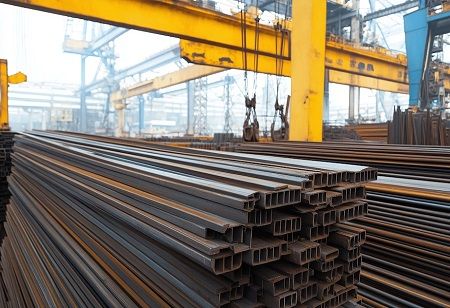
- Korea introduces the K-Steel Act to counter US tariffs and Chinese imports.
- Bill offers subsidies, tax breaks, and green steel zones for eco-friendly production.
- Establishes presidential committee to guide the steel industry’s future strategy.
Korea is implementing a strong policy initiative to rescue its steel sector from increasing global challenges, presenting a bipartisan bill designed to support local manufacturers affected by a 50 percent US tariff and a rise in inexpensive Chinese goods.
On Monday, 106 lawmakers from both the ruling and opposition parties announced the proposed “K-Steel Act,” which presents a long-term industrial strategy recognizing steel as essential for national security and economic strength.
“Korea’s steel industry has grown rapidly since 1970. But today, it faces an unprecedented crisis, caught between the global push for carbon neutrality, a flood of cheap Chinese imports and steep tariffs from key trading partners,” lawmakers said in explaining the purpose of the bill.
They caution that inaction would leave Korea vulnerable on several fronts. A declining domestic steel industry could impact its wider industrial network, endangering various sectors from shipbuilding to electric vehicle production.
“This bill is about both survival and transformation,” said Rep. Eoh Kiy-ku of the ruling Democratic Party of Korea and co-chair of the National Assembly Steel Forum. “With bipartisan support, we plan to pass this quickly and follow up with additional legislation if needed.”
Steel continues to be a crucial component of Korea’s manufacturing sector, constituting 4.8 percent of the national output and providing support for over 430,000 jobs. However, that foundation is at risk. Although a recent Korea-US tariff agreement has reduced duties on the majority of goods to 15 percent, the US will keep a 50 percent tariff on Korean steel.
Simultaneously, the European Union’s Carbon Border Adjustment Mechanism, scheduled to begin next year, will charge additional fees to Korean steel producers exporting to the EU unless they rapidly reduce emissions. Korea’s initiative arises as other leading economies, such as the US, EU, and Japan, have already started increasing public backing for their own steel industries.
Also Read: Japan Launches Anti-Dumping Probe Into China, Taiwan Steel
Governments are merging industrial strategy with climate initiatives through measures such as the US Inflation Reduction Act and EU climate subsidies to ensure supply chains while achieving net-zero goals. The K-Steel Act establishes a detailed policy framework that would enable the government to play a more active role in determining the industry's future.
At the central of the proposal is the establishment of a presidential committee responsible for developing five-year master plans and yearly action roadmaps to guide the steel industry through economic and environmental obstacles. To facilitate the industry's transition to greener practices, the legislation offers various financial incentives.
These encompass subsidies, low-interest financing, tax incentives, and production cost assistance for businesses investing in hydrogen and other low-emission technologies. It also establishes "green steel zones" — specific regions where permitting and regulatory procedures would be simplified to promote investment and innovation.
The law additionally enhances Korea’s protective trade policies. It demands stricter origin regulations, restrictions on low-grade steel imports, and increased power for the government to address unfair trade activities.

